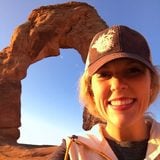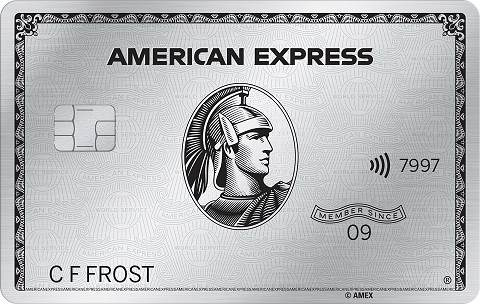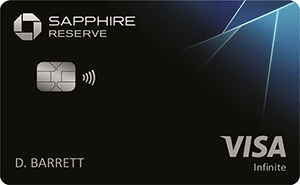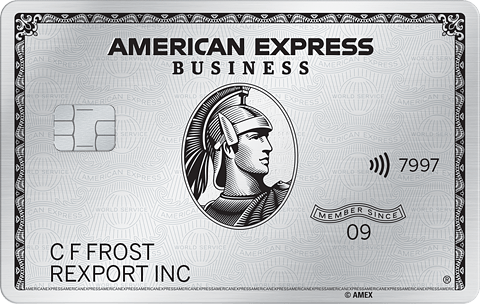The Guide to TSA’s 3-1-1 Liquids Rule
Liquid containers must not exceed 3.4 ounces in size, and must fit inside a one-quart, clear and resealable bag.
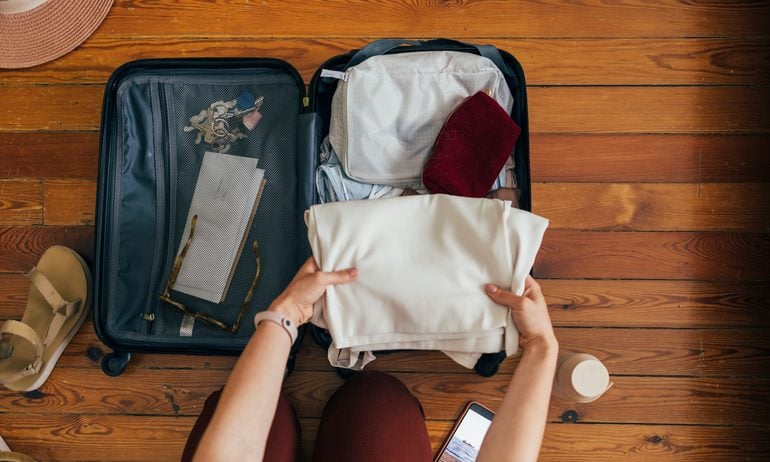
Many or all of the products on this page are from partners who compensate us when you click to or take an action on their website, but this does not influence our evaluations or ratings. Our opinions are our own.

Whether you're flying to your destination or headed home, you might have non-solid items in your carry-on bag. Items can range from personal hygiene products — like shampoo or contact lens solution — to consumable souvenirs from your trip, like a mini bottle of rum from the Caribbean.
However, remember the Transportation Security Administration’s (TSA) 3-1-1 liquids rule when packing your carry-on luggage. This guideline states how liquids must be stored in the bag you take onboard, and enforces volume restrictions for liquid items.
Learn why it is called the 3-1-1 rule, and how to pack carry-on liquids effectively for a streamlined travel experience.
What is the TSA 3-1-1 liquid rule?
In September 2006, the TSA implemented the liquids restriction that travelers flying in and out of U.S. airports know today. The guideline is called the 3-1-1 liquids rule, which is meant to help passengers easily remember the rules for liquid in carry-on bags.
So, why is it called the 3-1-1 rule? Here’s what each number means:
3: Passengers can bring up to 3.4 ounces (“3” for simplicity) of liquid. This measurement also equates to 100 milliliters per container.
1: All liquid containers must fit into 1 quart-sized bag.
1: Only 1 quart-sized bag is allowed per passenger.
The TSA’s 3-1-1 rule applies to liquids, including gels, creams, pastes, aerosols, and consumable goods, like salsa, honey, and peanut butter.
» Learn more: TSA Precheck or Global Entry: Which is right for you?
Understanding the 3-1-1 liquids guidelines
Despite the easy-to-remember 3-1-1 liquids rule, there are a few details that some travelers might feel are open to interpretation. Here’s more clarification about the TSA’s guidelines.
The first thing to consider when bringing liquid in your carry-on bag is its container. According to the TSA, the size of the container is used to determine the amount of liquid.
For example, if you have a partially consumed sports beverage bottle that’s labeled 16 ounces, but only have 3 ounces of liquid left, this doesn’t follow the 3-1-1 rule. The container’s volume exceeds the allowable 3.4-ounce volume limit and isn't cleared to go through TSA checkpoint.
Additionally, all liquid containers must be put inside a clear, quart-sized resealable bag. Other bags, like clear, vinyl travel toiletry pouches with a zippered top, are also acceptable.
Finally, remove the liquids bag from your carry-on luggage when preparing your belongings for TSA checkpoint screening. They must be placed in a bin for review.
Does the 3-1-1 rule apply to TSA PreCheck?
If you have TSA PreCheck, a membership program operated by the TSA, you do not have to remove your liquids bag at screening, but its contents must still follow the 3-1-1 rule.
TSA PreCheck offers dedicated airport security lines and streamlined screening at a few hundred airports across the U.S. Membership lasts five years and costs $78-$85, depending on where you enroll.
However, you can join the program without paying out-of-pocket as it is an included benefit of many travel credit cards.
$695.
$550.
$695.
$95.
• Credit for the application fee for TSA PreCheck or Global Entry.
• $199 statement credit to cover the cost of an annual Clear membership.
Terms apply.
• Statement credit for TSA PreCheck, Global Entry or NEXUS application fee.
• Credit for the application fee for TSA PreCheck or Global Entry.
• $199 statement credit to cover the cost of an annual Clear membership.
Terms apply.
• Statement credit of up to $100 as reimbursement for TSA PreCheck or Global Entry application fee.
» Learn more: The best airline credit cards right now
Tips for packing liquids in your carry-on luggage
Although the 3-1-1 rule might feel restrictive, there are ways to pack liquid in your carry-on bag for the least hassle possible.
Ensure that containers are travel-sized.
Pack your liquids bag at the top, or front pocket, of your carry-on to easily separate it from your luggage at the checkpoint.
Consider purchasing travel-sized liquids (like toothpaste and shampoo) at your destination rather than packing them.
Consider using specially designed silicone travel bottle covers to add another layer of protection to your liquids. These can help prevent accidental spills in your bag.
Keep liquids more than 3.4 ounces in checked luggage.
The bottom line
When passing through a U.S. airport, you’ll need to ensure that your carry-on liquids follow the 3-1-1 rule. Each liquid container you bring must not exceed 3.4 ounces in size, and all containers must fit inside a single one-quart, clear and resealable bag.
By packing your carry-on with these guidelines in mind, you can breeze through TSA checkpoint lanes with fewer delays.
How to maximize your rewards
You want a travel credit card that prioritizes what’s important to you. Here are some of the best travel credit cards of 2025:
Flexibility, point transfers and a large bonus: Chase Sapphire Preferred® Card
No annual fee: Wells Fargo Autograph® Card
Flat-rate travel rewards: Capital One Venture Rewards Credit Card
Bonus travel rewards and high-end perks: Chase Sapphire Reserve®
Luxury perks: The Platinum Card® from American Express
Business travelers: Ink Business Preferred® Credit Card
Chase Sapphire Preferred® Card
Travel
Dining
🔥 Huge highest-ever bonus on NerdWallet's 2025 Best All-Purpose Travel Rewards Card is back. Don't miss your rare chance to: Earn 100,000 points when you spend $5,000 on purchases in the first three months. That's worth at least $1,250 toward travel booked through Chase.
